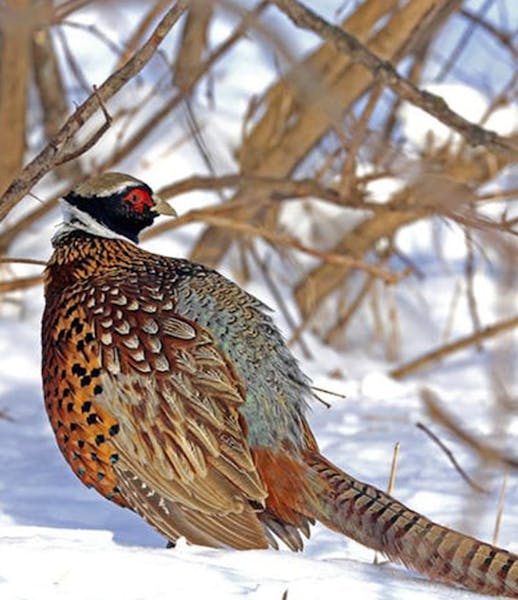Department of Natural Resources Conservation Officer Jacob Willis stationed himself on one spot along a snowmobile trail west of Duluth last weekend, stopping no fewer than eight riders for registration violations in less than one hour.
During a sensational start to the Minnesota snowmobile season, old sleds are being dragged out of storage for the first time in years. They're adding to abundant traffic on Minnesota's immense trail network — not to mention all the frozen lakes and road ditches that beckon as many as 200,000 snowmobilers a year when snow is plentiful.
"Anytime you have early snow the excitement level rises,'' said Greg Sorenson, president of Minnesota United Snowmobile Association. "This early snow is wonderful for our sport.''
But boffo December snowfalls that dumped 15 to 40 inches of snow across the state have also magnified snowmobiling's safety hazards and harms. DNR Enforcement Chief Col. Rodmen Smith said field officers have been responding to high numbers of trespassing complaints, noise problems and speeding cases.
Meanwhile, recent fluctuations in temperature combined with heavy snows and rain have made lake ice unpredictable. Even as far north as Red Lake, DNR Conservation Officer Demosthenes Regas last week warned of "deep slush conditions,'' "holes'' and open water on some lakes.
Before Christmas, the DNR issued a news release reminding the public of an upward trend in fatal crashes. Forty-seven people have died in Minnesota snowmobile tragedies since the winter of 2013-14. So far this winter, three riders have died and others have had close calls, including machines that have gone through the ice. In one case last month, a snowmobiler hit and critically injured a man who was walking on an ice-covered lake.
"People need to be cautious,'' Smith said. "Lots of the crashes we have involve people driving across ice. … Everything blends in.''
And while there's no evidence of increased drinking and drug use by snowmobilers, impairment from alcohol and drugs remains a common factor when there's an awful event, the chief said. Inexperience and lack of safety training also contribute to crashes, he said. Conservation officers are reminding families this season that any prospective rider born after Dec. 31, 1976, must obtain a snowmobile safety certification before taking to the trails.
Minnesota has more miles of snowmobile trails (22,000) than miles of state highway, Smith said. DNR maintains the major arteries, but snowmobile clubs from around the state volunteer to establish, maintain and groom the majority of the state's right-of-ways. It's a job that requires the goodwill of landowners for free access to private property that stitches the grid together.
That's why Sorenson, Smith and individual snowmobile clubs are disturbed by the high volume of trespassing and noise complaints this year. Especially in agricultural areas, rogue snowmobilers who go off trail can damage cover crops or cause other financial damage.
"You get the 1-percenters who want to leave the trail and baja into someone's private property,'' Smith said.
"We've lost some trails because of it, and we can't afford to lose trails,'' said Sorenson, who lives in Finlayson, a half-hour north of Hinckley.
Roaring engines also are alienating landowners who participate in the trail system. Smith said it's against state law to modify a snowmobile's exhaust system unless the vehicle is participating in a permitted race or other event. But a crackdown by conservation officers hasn't made much of a difference. The fine is $50 per ticket.
Sorenson said snowmobilers who add exhaust kits to their sleds typically aren't adding much horsepower to their engines. The modifications seem more related to making noise, he said.
"We encourage people to keep their snowmobiles stock and go as quiet as you can in residential areas,'' he said.
Laura Preus, a DNR Parks and Trails Division manager, said the $15.4 million snowmobile fund that reimburses snowmobile clubs for keeping up the trails is in relatively good shape. But about half of the revenue for the fund is derived from snowmobile registration taxes. The apparent glut of unregistered snowmobiles could hurt the fund in the future, she said.
"When there is a high registration renewal rate, it adds significant revenue to the snowmobile account, which ultimately helps with funding for trail grooming and maintenance,'' Preus said. "We want to emphasize the importance of renewing snowmobile registrations.''
Carrasco pitches solid into the 6th inning and the Guardians beat the Red Sox 5-4
Kansas adds AJ Storr after he led Wisconsin in scoring this season

The Twins sell tickets with all-you-can-eat classic concession fare. Are they worth it?
Butler, Williamson injuries are part of story for Heat-Bulls and Kings-Pelicans play-in finales

